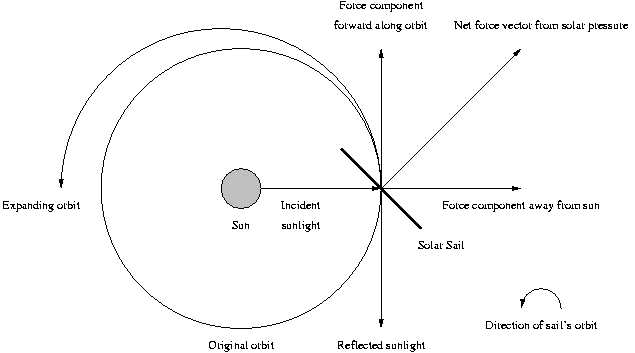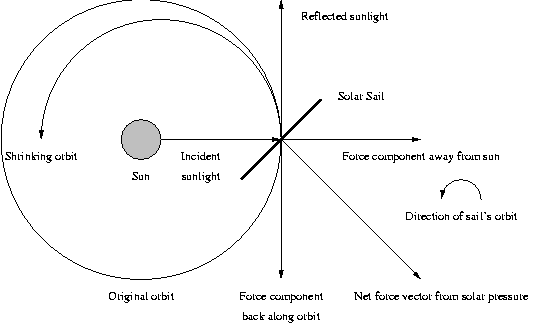Solar Sails - sswelm/KSPInterstellar GitHub Wiki
Principles
A solar sail allows a spacecraft to propel itself using radiation pressure alone, removing the need to carry any reaction mass, and simply using the deflection of photon energy to provide thrust.
The acceleration gained from solar radiation is extremely small, but can be applied over a long period of time to reach extremely high speeds, given a large enough sail and a payload of low mass.
In Interstellar, Solar sails function under non-physical timewarp, allowing for them to be useful for interplanetary travel.
Understanding Solar Sails
Changing orbits with a solar sail is counter-intuitive, since the forces at work are significantly different to both rockets, and sailing ships.
The simplest way to understand and experiment with this is to leave Kerbin's sphere of influence, and put the sail in a solar orbit with conventional rockets. It is possible to use sails in low planetary orbits, but there are several complexities here - it becomes more difficult to align the sail, and the planet tends to get in the way.
In a solar orbit, there will be two vectors acting on the craft. One vector will push the sail directly away from the sun, and the other will be controlled by the deflection of the sail - most efficiently at an angle of 45 degrees to the radial vector.
Travelling away from the sun:
(45 degrees retrograde)

Travelling towards the sun:
(45 degrees prograde)

(Images from SolarSailWiki, by Ben Diedrich, under a Creative Commons Licence)
Since this will take a long time to take effect, the sail may complete several solar orbits before reaching it's destination. Therefore, this will require holding a heading, time warping, re-adjusting the heading, and time warping again.
It's possible to consider the above in terms of "reflecting the light in the intended direction of thrust", since lowering an orbit would require thrusting with a rocket oriented to the retrograde vector, or equally the exhaust oriented towards the prograde vector.